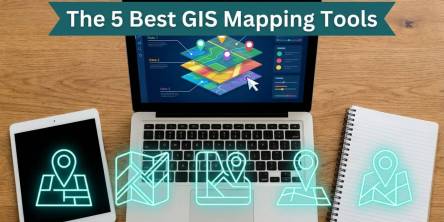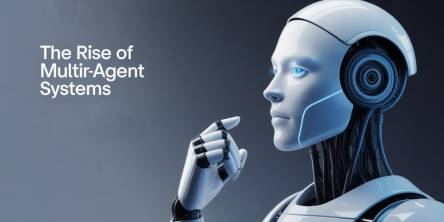Exploring AI and ML Applications in Various Industries

Intelligent technology-driven solutions are now guiding industries across all sectors. Innovative and disruptive technologies like Artificial Intelligence (AI) and Machine Learning (ML) are driving these changes, which play a crucial role in designing and developing intelligent solutions. They are reshaping the way businesses operate & make decisions. From healthcare to finance, manufacturing to marketing, the applications of AI and ML are pervasive, promising unparalleled advancements and opportunities for organizations willing to embrace the power of intelligent automation.
Smart assistants, autonomous vehicles, facial recognition, product recommendations & much more have been made possible because of tech-driven intelligent solutions powered by AI and ML. These technologies can potentially solve complex business problems, improve decision-making, automate repetitive tasks, eliminate human error and more. These are some of the many reasons industries and brands embrace AI and ML solutions.
In this blog, I'll delve into the diverse and compelling use cases of AI & ML across industries while showcasing how these innovative technologies help drive efficiency, innovation, and success in the modern business landscape.
AI & ML - Practical Applications Across Industries
Healthcare: It has significantly benefited from AI and ML. These technologies have simplified work for the hospital administration staff, patients, and physicians by performing tasks faster and at lower costs. For example, analyzing medical images is a labor-intensive and time-consuming task prone to human error. AI and Machine Learning algorithms can help by analyzing large numbers of medical images like MRIs, X-rays, CT scans, cardiograms, and ultrasounds at high speed while improving diagnostic accuracy by up to 90%.
AI and ML algorithms can also be used to develop healthcare solutions that proactively monitor patients' health and send real-time alerts when changes are detected in the patient's condition. Collecting such advanced data using these technologies can ensure patients receive the proper care at the right time. These technologies can also forecast health issues before they occur, providing predictive capabilities that can help prevent health problems.
The potential for AI and ML is significant. David Cutler, a Harvard economist and one of the architects of the US Affordable Health Care Act ("Obamacare"), has proposed changes in the administrative processes that can save US$ 50 billion in costs while resulting in greater satisfaction for patients and providers.
Education: AI in education is proliferating, and increasing demand for personalized learning, improved student outcomes, and the adoption of AI-based education solutions by education institutions worldwide drive this growth. As these technologies continue to evolve, the potential for students to learn and educators to teach is being transformed. AI tools can generate tailor-made schedules and customize learning per individual needs by identifying the gaps.
Similarly, intelligent content can range from digital textbooks, guides, and videos to AI tools that create customized environments based on the educational organization's strategies and goals. AI monitoring and evaluation tools can streamline the content for different learning styles. The areas for improvement in the curriculum can be identified with the help of AI and ML algorithms and suggested methods to fill the gaps in content.
Carnegie Learning relies on AI and Machine Learning for its learning platforms for high school and college students and can provide unique solutions in areas like math, world languages and more. Besides the "Best Artificial Intelligence/Machine Learning app" in the Tech Edvocate Awards, they have won many other educational awards.
Marketing: Today's fast-paced, dynamic landscape is filled with various options for marketing brands and it can become challenging for organizations to attract the attention of their target audience. By using AI and ML, companies can transform how they can attract, nurture and convert prospective audiences.
AI and ML can be used to simulate and create marketing models to build strategies based on personal patterns to guide their buying journey. These technologies can help gain a better understanding of customer preferences and behavioral patterns and even identify ways to engage with them.
Wordstream, an AI-based program, has been designed to improve ad performance using Machine Learning. It accesses Pay-per-Click (PPC) ads across social media platforms and offers data-driven recommendations.
Banking and Finance: There are many ways in which AI and Machine Learning can be employed in the finance industry.
Fraud is a big issue for banking institutions and finance companies, accounting for billions of dollars in yearly losses. Advances in technology are also posing a significant risk for data breaches. To avert these issues, the financial industry uses machine learning which scans large data sets to flag, report and combat fraudulent transactions.
Machine Learning is also used in portfolio management, a part of the financial industry, to provide automated financial advice to investors. Algorithms are used to establish a financial portfolio as per investors' goals and risk tolerance. These AI-based robo-advisors use details given by investors to determine the best investment opportunity.
Conclusion
These are practical use cases of AI and ML use in various industries. AI and ML have now become an integral part of almost all industries and are used to improve working and to provide better customer services to their customers. Partnering with a trusted and reliable software company offering outcome-oriented and human-centered pragmatic AI and Machine learning development services can create innovation-driven, futuristic & data-driven business solutions.
Similar Articles
Staying organized can feel like a full-time job. Between meetings, deadlines, and personal commitments, it’s easy to get overwhelmed.
Choosing the right GIS mapping software depends on what you need to accomplish. Some platforms cater to developers who want to build custom applications from scratch.
For data intensive industries such as insurance, the global business landscape is undergoing a profound transformation. Thanks to all the relentless technological innovation, this shift presents both significant challenges and unparalleled opportunities for modernization of the insurance sector.
Organizations are always looking for newer technologies to aid their operations. So, this hunt revolves around solutions that offer not only agility and scalability but are also cost-effective.
Not long ago, the idea of multiple AI agents working together, each with a specific role, collaborating to solve problems, felt like science fiction.
In today’s data-driven world, choosing the right business intelligence (BI) platform can make or break your organization's analytics success.
We all know that companies today are no longer limited to a single physical location. Work processes are also no longer strictly isolated.
It is neither secret nor news that the mind-boggling pace of digital transformation around us has totally altered consumer expectations.
In the world of finance, speed and accuracy are everything. Decisions made a day late can cost millions, and delayed visibility into financial performance can leave even the best organizations blind to risks.









